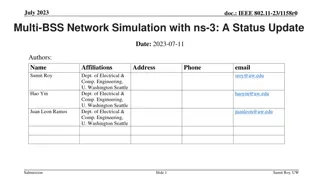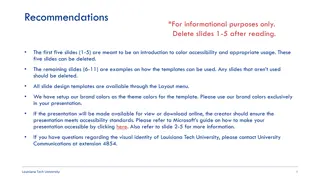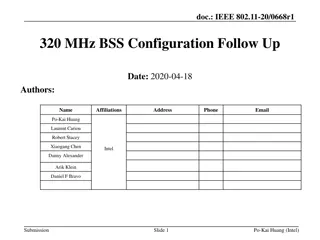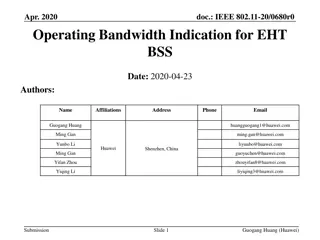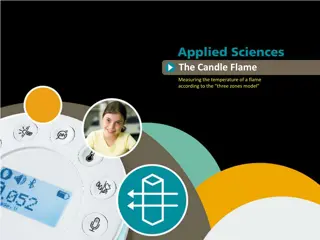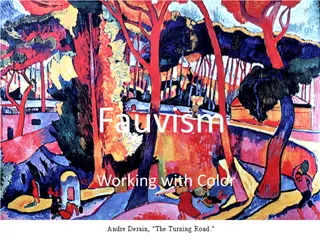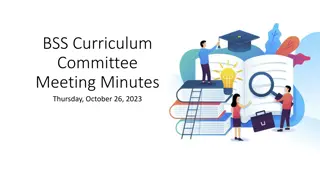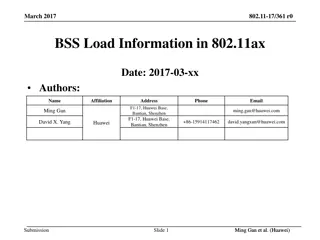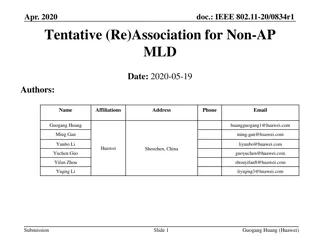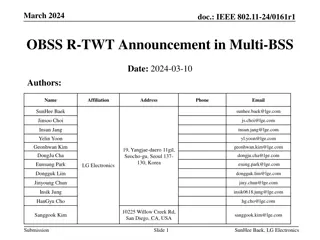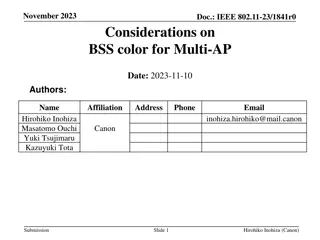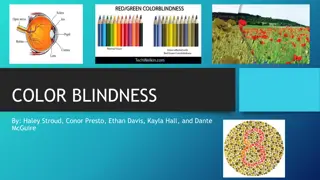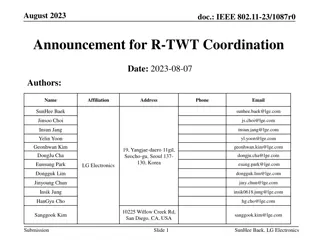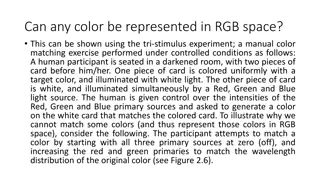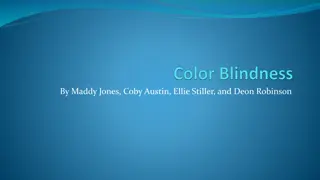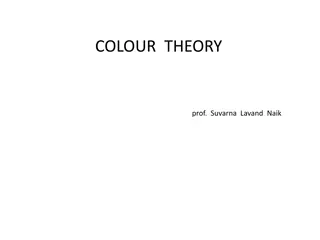Coordinated R-TWT Protection in Multi-BSS
The protection of Restricted Transmitting Using Time Window (R-TWT) service periods in a multi-BSS environment, where overlapping BSSs can affect the latency-sensitive traffic exchange. It proposes methods to coordinate R-TWT service periods and receive schedule information for neighboring BSSs.
3 views • 11 slides
Multi-BSS Network Simulation in ns-3 with IEEE 802.11-23 Update
A status update on the WiFi module in ns-3 for IEEE 802.11-23 focusing on advancements like new protocol features, AI/ML integration, and runtime improvements for multi-BSS networks. The simulations cover throughput benchmarks, multi-BSS scenarios, interference parameters, and validation against ana
13 views • 33 slides
Enhancing Low Latency Channel Access in Legacy IEEE 802.11 Networks
This document discusses the impact of introducing a Low Latency (LL) channel access mechanism in legacy IEEE 802.11 networks. It addresses the use of High Priority EDCA (HiP EDCA) mechanisms, proposing solutions for improving tail latency in both isolated BSS and multi-BSS scenarios. Additionally, i
4 views • 10 slides
Understanding Color Theory: A Comprehensive Guide to Colors
Explore the fascinating world of colors with an in-depth look into color theory. Learn about chromatic and achromatic colors, neutral colors, hues, color wheels, primary and secondary colors, tertiary colors, values, tints, shades, and tones. Delve into the visual responses of the eye to reflected r
2 views • 19 slides
Color Accessibility Guidelines and Examples
Enhance color accessibility in presentations by following Louisiana Tech University's guidelines for using brand colors, text sizes, and color combinations. Learn how to create visually inclusive content and promote readability for all audiences. Explore approved color palettes and typography recomm
2 views • 11 slides
Fun Art Task: Creating a Color Wheel
Explore color relationships by mixing secondary and tertiary colors to create a vibrant color wheel. Learn about primary, secondary, and tertiary colors, and follow step-by-step instructions to create your own color wheel using basic art supplies. Enhance your understanding of color theory through t
1 views • 12 slides
IEEE 802.11-20/0668r1: EHT BSS Configuration Proposal
The document discusses the configuration of a 320 MHz BSS in the context of 6 GHz regulations, focusing on EHT operation elements such as channel width indication, CCFS principles, and BSS advertisement settings. It proposes design principles for managing legacy and EHT STA operations, emphasizing s
0 views • 14 slides
Bandwidth Indication for EHT BSS in IEEE 802.11-20/0680r0
This IEEE document discusses the proposal to use an Enhanced High Throughput (EHT) operation element to indicate operating bandwidth for EHT Basic Service Sets (BSS). It suggests methods for indicating channel configurations, punctured channels, and channel width for EHT stations. The goal is to ena
0 views • 15 slides
Understanding Temperature and Color Relationship in Candle Flames
Explore the relationship between temperature and color in candle flames through the three zones model. By conducting experiments using a thermocouple sensor, investigate how the color gradient in a flame correlates with its temperature variations. Learn about the structure of a candle flame, the inf
1 views • 21 slides
Limit Test of Iron Based on Color Reaction with Thioglycollic Acid
The limit test for iron involves the reaction of iron in ammoniacal solution with citric acid and thioglycollic acid to form a reddish-purple color. By comparing the color produced with a standard solution, the presence of iron is determined. Citric acid prevents precipitation of iron, while thiogly
1 views • 5 slides
Mastering Color in Film: A Comprehensive Guide to Using Color Grading Techniques
Explore the intricate world of color in filmmaking through understanding color grading, log explained, Log rec.709, color correction, and grading techniques without LUTs. Enhance your storytelling by harnessing the power of color to evoke emotions and create visual impact in your films.
1 views • 6 slides
IEEE 802.11-21/0036r0 BSS Parameter Update Clarification
This document delves into the IEEE 802.11-21/0036r0 standard, specifically focusing on the BSS parameter update procedure within TGbe D0.2. It details how an AP within an AP MLD transmits Change Sequence fields, Critical Update Flags, and other essential elements in Beacon and Probe Response frames.
1 views • 11 slides
IEEE 802.11-21/1737r0 Beacon and Group Frames Information
An IEEE document from November 2021 discusses Beacon and group frames in wireless networks, focusing on out-of-band signaling to improve BSS range determination and frame reception by non-AP MLDs. It addresses the impact of frame types and MCS on BSS range and transmission rates, proposing solutions
3 views • 14 slides
IEEE 802.11-21/1737r0 Beacon and Group Frames Information
This document discusses the transmission of Beacon and group addressed frames in IEEE 802.11 networks, focusing on the impact of frame types and MCS on BSS range and transmission rate. It proposes out-of-band signaling to assist scanning STAs in determining BSS range and non-AP MLDs in selecting a l
0 views • 14 slides
Understanding Color Theory: A Visual Guide for Effective Communication
Explore the fundamentals of color theory, from primary to tertiary colors, and how they can be combined to achieve aesthetic blends, readability, and convey meaning. Discover the role of the color wheel in making purposeful color selections for creating visual impact and contrast in design and commu
0 views • 21 slides
Understanding Fauvism: Working with Colors and Color Schemes
Fauvism is an art movement known for its bold and arbitrary use of colors. Fauvist painters carefully selected colors to convey specific moods in their artworks. This guide explores Fauvism, color theory, and different color schemes to help you create your own expressive painting. Learn about comple
0 views • 8 slides
Understanding Color Theory: A Comprehensive Guide
Practical guidance on color theory including the color wheel, color schemes, and color psychology. Learn about the importance of utilizing various color schemes like monochromatic, complementary, and analogous to create effective designs. Understand how different colors convey meanings and emotions
0 views • 11 slides
BSS Curriculum Committee Meeting Overview
The BSS Curriculum Committee Meeting discussed the need to update the curriculum process due to the increasing workload and impending retirement of key personnel. The meeting also compared curriculum processes in different divisions, highlighting the roles of faculty and staff in managing curriculum
0 views • 9 slides
Understanding Color: Characteristics, Color Wheel, and Interior Decoration
Color is a vital aspect of our everyday lives, evoking various emotions and perceptions. This article delves into the characteristics of color, the color wheel, color schemes, and the use of color in interior decoration. It explains how colors are perceived, the qualities of color like hue, value, a
1 views • 51 slides
Fun and Educational Color Mixing Experiment for Elementary Students
Engage elementary school students in a hands-on color mixing experiment using primary colors to create secondary colors. The activity involves visual demonstrations, color paddles, and mixing colored goo in bags to understand color blending and create unique color combinations. Through this interact
0 views • 7 slides
Enhancing BSS Load Management in 802.11ax Networks
Proposed changes to address load balancing issues in dense 802.11ax scenarios by introducing a new information element for BSS Load. The new element considers OFDMA utilization, UL/DL MU-MIMO, and allows for future extensions to ensure efficient AP selection by unassociated STAs. Enhancements aim to
0 views • 14 slides
802.11aj 45 GHz Channel Access and BSS Operation Framework Proposal
This document outlines a proposal for channel operation and BSS operation in the 45 GHz frequency bands for 802.11aj in China. It includes details on channelization, spectrum allocation, maximum transmit power, and BSS configuration rules. The aim is to meet the functional requirements specified whi
0 views • 32 slides
Understanding Attributes and Color Schemes in Graphics
Graphics systems utilize attributes to define how primitives are displayed, such as color and size, while color and grayscale can be stored in different ways like direct storage and indexed storage schemes. The RGB color components play a key role in determining the color shades, with various color
0 views • 51 slides
IEEE 802.11-20/0834r1: Recap of Association and Fast BSS Transition
The document presents insights into tentative (re)association for non-AP MLDs, focusing on addressing data delivery interruptions during roaming and association with new access points. It covers necessary actions before data transfer, open system authentication, association operations, and fast BSS
0 views • 17 slides
IEEE 802.11-24/0161r1 OBSS R-TWT Announcement in Multi-BSS
The document discusses the coordination of R-TWT schedules in Multi-BSS to enhance operation and protection. It covers how APs announce OBSS R-TWT schedules to associated STAs, ensuring efficient transmission of latency-sensitive traffic. Methods for announcing OBSS R-TWT schedules to EHT STAs and U
0 views • 13 slides
R-TWT Coordination Negotiation in Multi-BSS Networks
This document discusses the coordination negotiation process for R-TWT schedules in Multi-BSS networks to minimize interference between Access Points (APs). It outlines the overview, signaling methods, and importance of coordinated R-TWT schedules in improving network efficiency.
0 views • 16 slides
IEEE 802.11-23/1841r0 BSS Color Considerations for Multi-AP Networks
The document delves into the challenges of BSS color management in multi-AP setups, focusing on Joint Transmission techniques in IEEE 802.11 networks. It proposes solutions to avoid filtering PPDU transmissions due to mismatched BSS colors, potentially causing PHY preamble collisions.
1 views • 8 slides
Understanding Color: A Comprehensive Overview
Color is a fascinating aspect of our visual world, explored through the prism of science and light. This chapter delves into the origins of color perception, from Isaac Newton's study of the color spectrum to the reflection and transmission of light that determines how we see colors. Gain insights i
0 views • 28 slides
Understanding Color Blindness: Causes, Symptoms, and Types
Color blindness, also known as color vision deficiency, is a genetic disorder that affects the ability to distinguish between certain colors. It is caused by the absence of color-sensitive pigment in cone cells of the retina, often passed down on the X chromosome. Symptoms vary from difficulty diffe
1 views • 16 slides
Announcement of OBSS R-TWT Coordination in Multi-BSS Environment
The document discusses the coordination of R-TWT service periods (SPs) in a Multi-BSS environment, focusing on addressing limitations in the exchange of latency-sensitive traffic in adjacent BSSs. It explores methods for coordinating R-TWT SPs among multiple APs to protect the intended SPs within ea
0 views • 9 slides
The Impact of Colors on Decision Making in Visual Displays
Investigating the influence of color on decision-making, particularly in legal contexts, through the manipulation of photographs with different color schemes. Prior research suggests that color can play a crucial role in how visuals are perceived and remembered, especially in litigation settings. By
0 views • 37 slides
BSS Division Council Meeting Highlights and Updates
The BSS Division Council met on November 16, 2023, discussing attendance, agenda items, and program reports. The meeting covered various topics including evaluations, annual planning, sabbaticals, and reports from different programs. It was noted that student survey results were delayed and self-eva
0 views • 14 slides
Exploring the Basics of Color Theory
Understand the essence of color with insights into the sources, perception, and interpretation of color. Dive into the color wheel, primary, secondary, tertiary, warm, cool, and neutral colors, and learn about color harmony to create visually pleasing designs.
0 views • 14 slides
Understanding Color Representation: RGB vs. CIE vs. HSV Models
Exploring the limitations of representing all colors in RGB space and the alternative approaches offered by the CIE color space and HSV color model. While RGB is limited by additive primaries, CIE provides a broader range of color representation, and HSV simplifies color perception by emphasizing hu
0 views • 8 slides
Understanding Color Blindness: Types, History, and Impacts
Color blindness, also known as color vision deficiency, affects individuals by limiting their ability to perceive certain colors. It was first discovered by John Dalton, who suffered from red/green color blindness himself. The two main types are red/green and blue/yellow color blindness, each with i
0 views • 19 slides
Understanding Color Blindness: Causes, Symptoms, and Diagnosis
Color blindness, also known as color vision deficiency, is a genetic disorder that affects the ability to distinguish between colors. John Dalton discovered color blindness in 1794. It is inherited in an X-linked recessive pattern and can cause difficulties in daily life, such as trouble seeing colo
0 views • 13 slides
Understanding Design Principles: Contrast, Repetition, Alignment, Proximity, Color Theory
Explore the significance of design principles such as contrast, repetition, alignment, proximity, and color theory in creating visually appealing and effective designs. Learn how contrast plays a vital role in guiding the viewer's attention and enhancing visual interest through various techniques li
0 views • 30 slides
Exploring the Impact of Color in Film Studies
Delve into the fascinating world of color in films through a series of engaging activities and discussions. From black and white classics to vibrant modern movies, uncover how color choices influence storytelling, evoke emotions, and captivate audiences. Explore the history, science, and psychology
0 views • 6 slides
Understanding Color Theory: Basics and Applications
Color theory encompasses the color wheel, color harmony, and how colors are used. It provides a logical structure for organizing and creating colors. Primary, secondary, and tertiary colors play key roles in this theory, along with concepts like color harmony and context. By understanding color theo
0 views • 28 slides
IEEE 802.11-15/1104r4: Optimizing CCA Threshold for Spatial Reuse in WLANs
The document discusses considerations for optimizing the Clear Channel Assessment (CCA) threshold in wireless local area networks (WLANs) to enhance spatial reuse efficiency. It emphasizes minimizing over-protection caused by the current CCA rule while addressing factors like frequency reuse, BSS/OB
0 views • 18 slides

